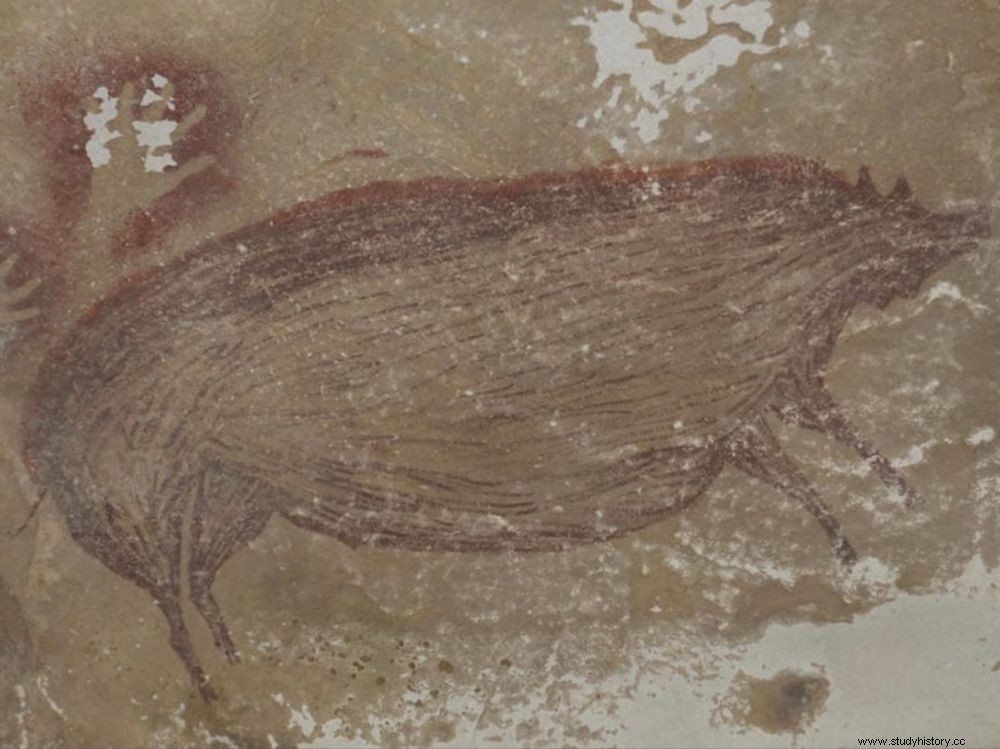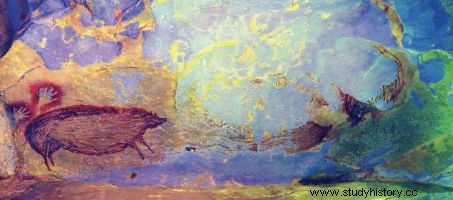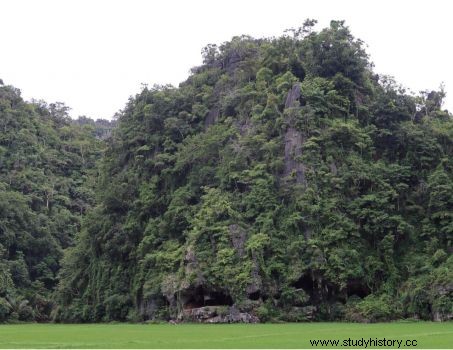More than 45,000 years old according to researchers, a representation of a wild pig has been discovered in a cave in Sulawesi, Indonesia. Possibly the oldest rock art in the world.

Figure of a wild pig made with red ocher on the walls of Leang Tedongnge cave, in Sulawesi, Indonesia.
It is the oldest known wild pig. Archaeologists from Griffith University (Australia) said they had discovered a 45,500-year-old rock painting depicting the animal during research carried out in the south of the island of Sulawesi, the largest and most former Island of Wallacea, a biogeographic zone that separates mainland Asia from Australia and Papua New Guinea. This figure painted in red ocher is that of a warty pig from Sulawesi (Sus celebensis ), a suid endemic to the region. Its antiquity would make it the oldest dated rock representation to date. By comparison, the parietal achievements of the Chauvet cave (Ardèche), in France, date back 36,000 years.
A painting 54 cm high and 1.36 meters long
In the study published in the journal Science Advances , the researchers reveal that the discovery was made in 2017 in the cave of Leang Tedongnge, a cavity located in the karst massifs of an isolated valley in the south of the island. 54 cm high and 1.36 meters long, the figure of this short-legged suid is represented with facial growths typical of those worn by adult males of the species. In 2019, this same team of archaeologists had already published results for a rock art scene at least 43,900 years old, located in the cave of Bulu Sipong 4, in the heart of this same region. It featured hybrid characters hunting a bunch of wild pigs.

Image processing of the painted panel of the decorated cavity of Leang Tedongnge, and its 45,500-year-old figure. Credits:Griffith University/Australia.
Archaeological evidence of the antiquity of human presence in these oceanic islands
Because the ocher in the cave paintings cannot be dated directly, the scientists took samples of the calcite (speleothemes) that cover the figures, deposits of calcium carbonate that naturally form on the surface of the rock faces. They then analyzed it using the uranium-thorium method. This is how Maxime Aubert of Griffith University (Australia), the author of the datings and co-signer of the article, was able to establish that the painting below was at least as old as 45,500 years old. calcite deposit. At the same time, archaeological excavations carried out in two local rock art sites, at Leang Bulu and Leang Burung2, have revealed, in levels of ancient sediments, the presence of pigments and fragments of ocher more than 40,000 years old.

Limestone massif where the entrance to the Leang Tedongnge cave is located, in Sulawesi. Credits:Griffith University/Oktaviana
These very important dates for the history of the first human artistic creations are also important as archaeological evidence of the antiquity of human presence in this vast area of oceanic islands, gateway to the Australian continent, where anatomically modern humans are arrived 65,000 years ago. They fill gaps in the history of ancient human migrations as much as in that of prehistoric rock art.
